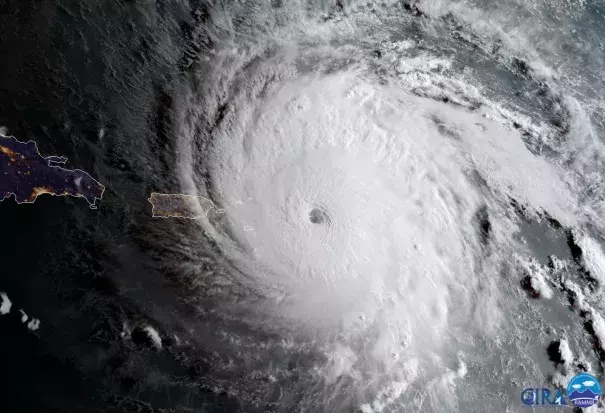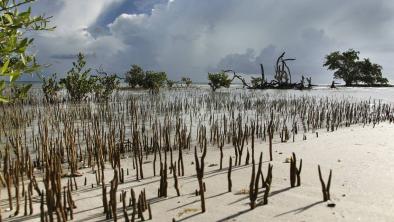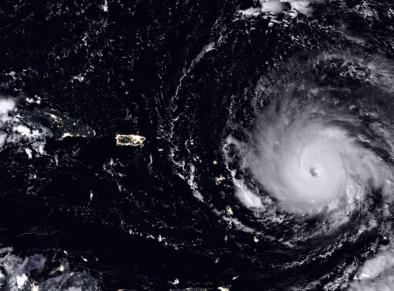Do we need a Category 6 rating for superhurricanes like Irma in the global warming era?

On Tuesday, Irma became the most powerful Atlantic hurricane ever recorded outside of the Caribbean and Gulf of Mexico, according to the National Hurricane Center (NHC).
With sustained winds of 185 miles per hour, the monster Category 5 storm is bearing down on the Caribbean and aimed squarely at Florida, for now.
The strength and intensity of Irma has stunned even the most seasoned meteorologists and raises the question: Do we need a Category 6 rating for superhurricanes like Irma in the global warming era, which is widely projected to make the worst hurricanes get more and more intense? We asked some experts.
The Safir-Simpson scale for hurricanes is built around windspeed, and when it was being developed over four decades ago, people weren’t really focused on global warming and its role in fueling stronger and stronger hurricanes as long as we keep warming the Earth and its oceans.
Hurricanes “extract heat energy from the ocean to convert it to the power of wind, and the warmer the ocean is, the stronger a hurricane can get,” meteorologist and former hurricane hunter Jeff Masters explained recently on Living on Earth. “So, scientists are confident that as we continue to heat up the oceans, we’re going to see more of these high-end perfect storms.”
In 2006, MIT climatologist Kerry Emanuel, one of the foremost experts on the connection between climate change and hurricanes, said, “I don’t see any reason why the power of hurricanes wouldn’t continue to increase over the next 100 or 200 years.” In a 2015 update on what we’ve learned about this connection since the 2005 season, Emanuel explained that “virtually every study that has been done, dating to 1987, shows increasing potential intensity in most places as our climate continues to warm,” with a trend of some 10 mph increase for every degree centigrade of increase in tropical sea surface temperatures.
I asked Emanuel about his 2006 quote that the top hurricane intensities are likely to keep increasing for the next century or two, and he said, “I definitely stick by that original quotation. It will be awhile before we will be able to see a statistically significant trend in the noisy and imperfect hurricane record, but there are already hints in satellite data of an upward trend in the incidence of the most powerful storms.”
As for whether we should add a new Category 6 hurricane classification, Emanuel replied, “These categories are, of course, a construct to communicate the dangers of hurricanes to the public. I do not think they serve the purpose well. Sandy, for example, was not even technically a hurricane when it ravaged NYC. But if we stick with categories, we may indeed need a 6 someday.”
Finally, I asked Masters, a person who used to fly into hurricanes for a living, for his view.
“From a climatology perspective, it would make sense to add a Category 6, to draw attention to the fact that climate change is likely going to make the strongest storms stronger,” Masters explained. But “from a practical advisory/warning standpoint, it makes little sense to add a Category 6, since a Category 5 storm is already catastrophic. Having a Category 6 storm would not motivate people to take action to protect themselves any more than having a Category 5 would.”
The central flaw in the current category system are clear: it doesn’t tell you the scale of the destruction we face from a given hurricane. That flaw is what led to the phony notion of a hurricane drought.
But, for now, we appear to be stuck with the current system. So I asked Michael Mann, a leading climatologist, whether we needed a new Category 6 for hurricanes like Irma, and he replied, “It seems logical to me to do so.” He added that “Irma certainly fits the pattern of increasingly strong hurricanes,” which is “precisely what studies have predicted we would see as a result of human-caused warming.”
Related Content





